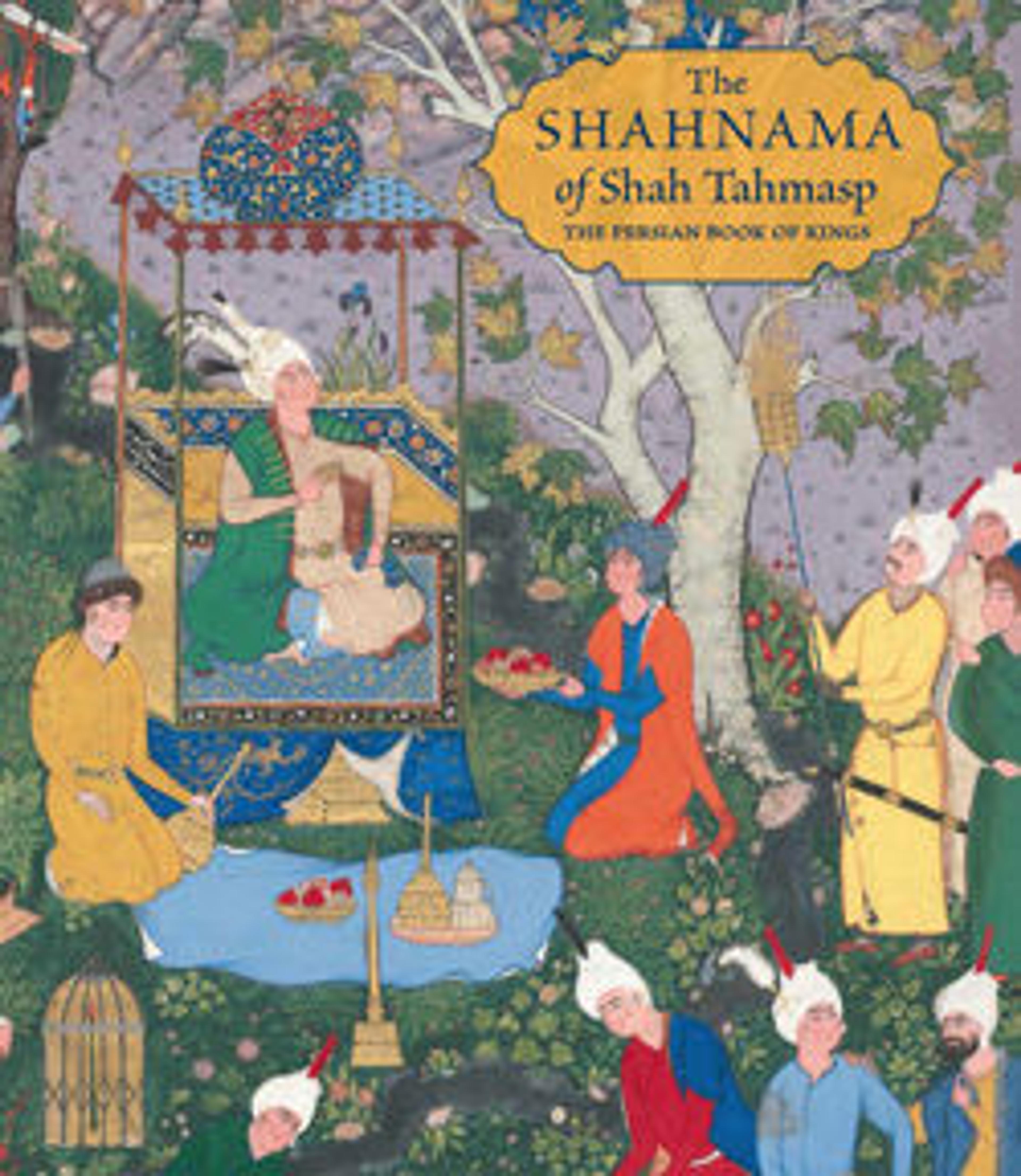Candlestick inscribed with Wishes for Good Fortune, Peace, and Happiness to its Owner
This brass candlestick was probably cast in three pieces which were then soldered. There are two bands of inscriptions: a knotted kufic one on the neck and a pierced thuluth inscription on the main body, both with common benedictory wishes for good fortune, peace, and happiness to its owner. Larger decorative elements such as the interlaced medallion motifs and the split-palmette vines were executed in a shallow repoussé and finer details such as the curling tendrils in the scrolling vines around the thuluth inscription were chased and further articulated by the use of a black organic compound. The shape of the candlestick—a narrow neck and wide, flaring base—is quite common and appears in miniature paintings from the the Shahnama of Shah Tahmasp. The pierced openwork body is unusual on such candlesticks.
Artwork Details
- Title:Candlestick inscribed with Wishes for Good Fortune, Peace, and Happiness to its Owner
- Date:ca. 1500
- Geography:Attributed to Iran
- Medium:Brass; cast, pierced, engraved, and inlaid with black organic compound
- Dimensions:H. 9 7/8 in. (25.1cm)
Diam. (base) 7 15/16 in. (20.2 cm) - Classification:Metal
- Credit Line:Purchase, The Seley Foundation Inc. Gift, Louis E. and Theresa S. Seley Purchase Fund for Islamic Art, Schimmel Foundation Inc., Margaret Mushekian and Mr. and Mrs. Jerome A. Straka Gifts, Rogers and The Friends of the Islamic Department Funds, 1980
- Object Number:1980.114
- Curatorial Department: Islamic Art
More Artwork
Research Resources
The Met provides unparalleled resources for research and welcomes an international community of students and scholars. The Met's Open Access API is where creators and researchers can connect to the The Met collection. Open Access data and public domain images are available for unrestricted commercial and noncommercial use without permission or fee.
To request images under copyright and other restrictions, please use this Image Request form.
Feedback
We continue to research and examine historical and cultural context for objects in The Met collection. If you have comments or questions about this object record, please contact us using the form below. The Museum looks forward to receiving your comments.
